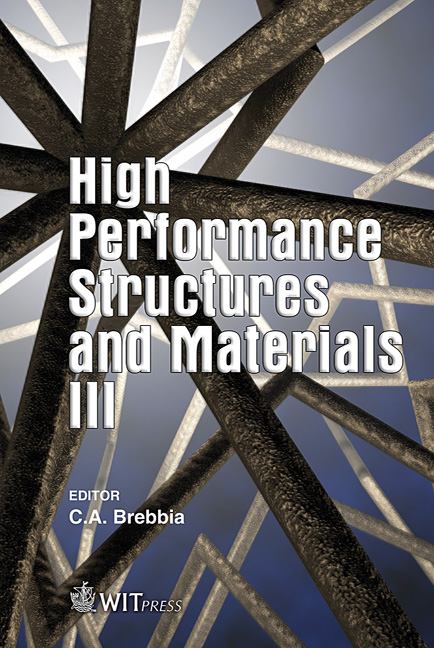Measurement Of The Fiber Stress Distribution During Pull-out Test By Means Of Micro-Raman Spectroscopy And FEM Analysis
Price
Free (open access)
Transaction
Volume
85
Pages
9
Published
2006
Size
715 kb
Paper DOI
10.2495/HPSM060141
Copyright
WIT Press
Author(s)
K. Tanaka, K. Minoshima & H. Yamada
Abstract
A single-fiber pull-out model composite for an aramid/epoxy system was specially designed to measure the stress distribution of the aramid fiber embedded in the matrix using micro-Raman spectroscopy. The stress transfer length of the fiber obtained was about 400-500µm, which was equal to the result of FEM analysis. Just after the initiation and propagation of the fiber/matrix interfacial debonding, the fiber was broken, and the fiber in the matrix had the axial tensile residual stress. The tensile residual fiber axial stress showed the maximum at around the tip of the interfacial debonding. The stress was reduced and became almost equal to zero after being immersed in deionized water at 80 °C for 44h. This behavior agreed with the result of FEM analysis, in which the friction coefficient was introduced in the fiber/matrix interface. Keywords: interfacial properties, micro-Raman spectroscopy, pull-out test, aramid fiber, friction. 1 Introduction Investigation of the fracture strength and fracture mechanism of the fiber/matrix interface is extremely important, because the mechanical properties of the fiber reinforced composites depend strongly not only on the properties of the fibers and the matrix but also on the fiber/matrix interfacial ones. We carried out the single fiber pull-out tests to evaluate the influence of water absorption on the interfacial properties of aramid/epoxy composite (Tanaka et al. [1]). In this
Keywords
interfacial properties, micro-Raman spectroscopy, pull-out test, aramid fiber, friction.





